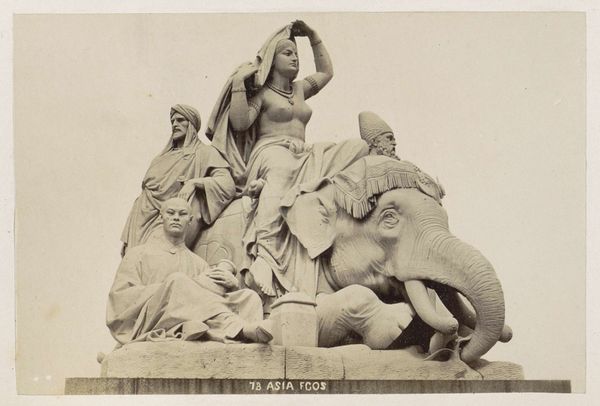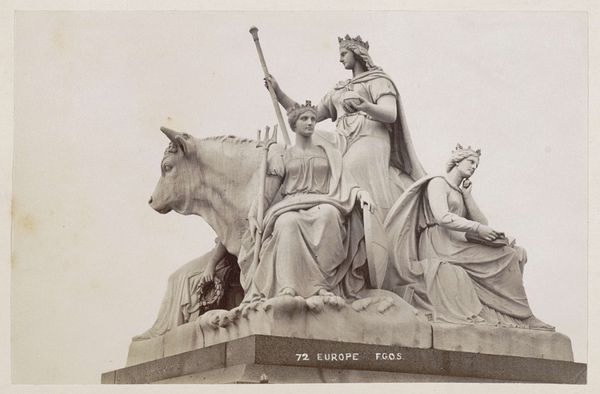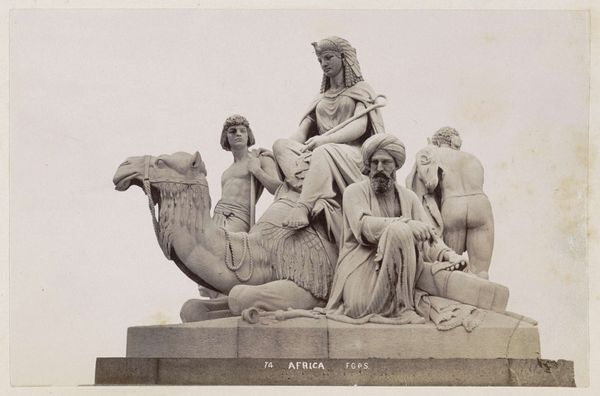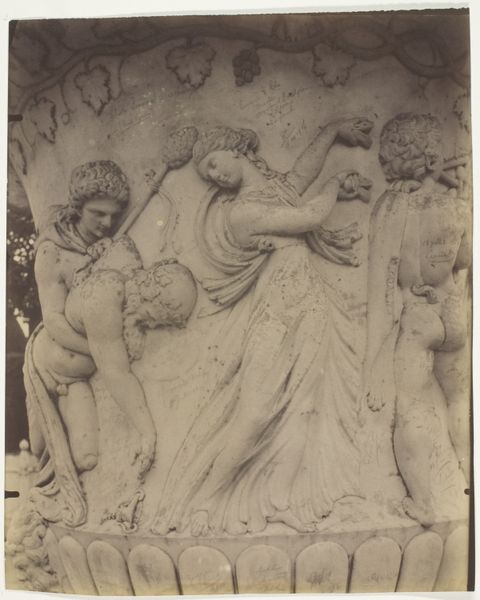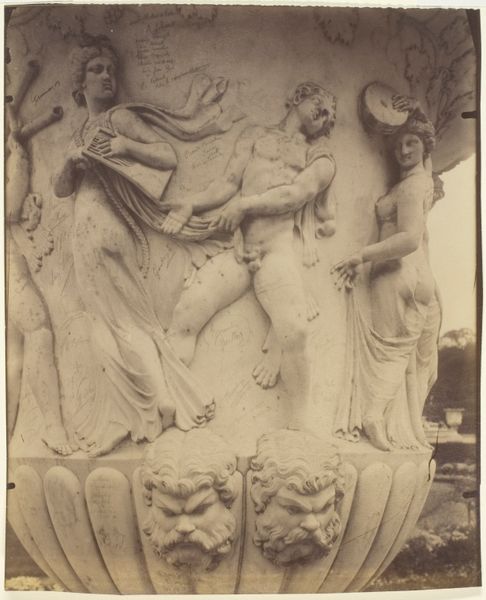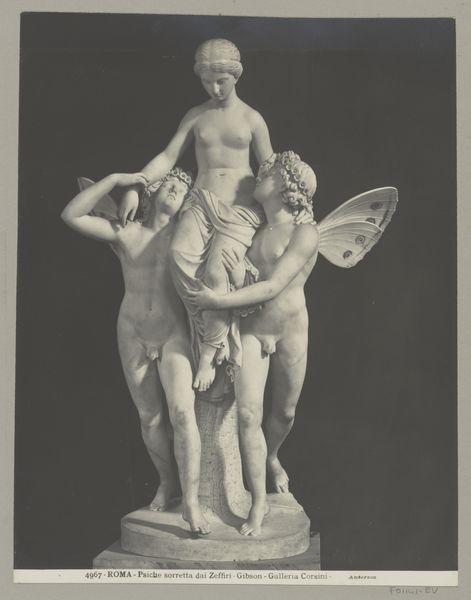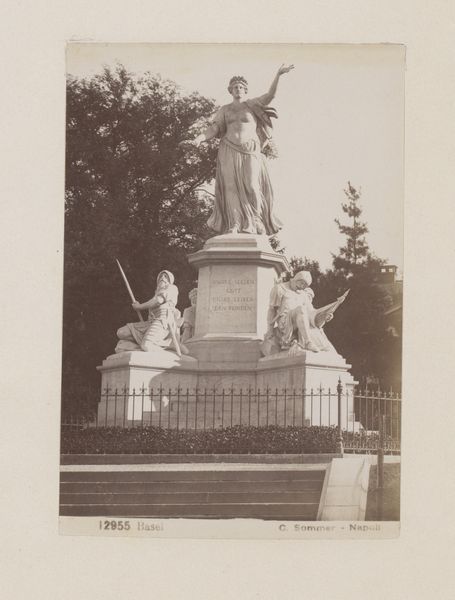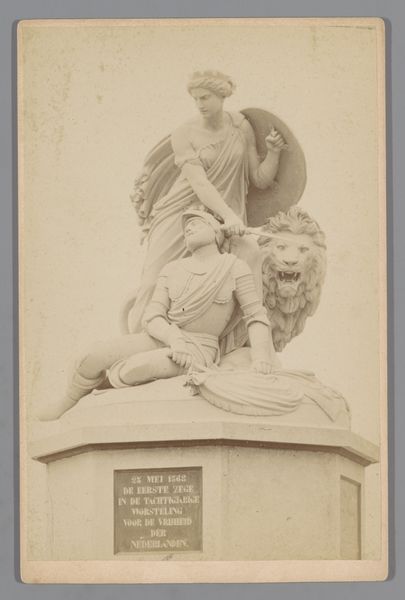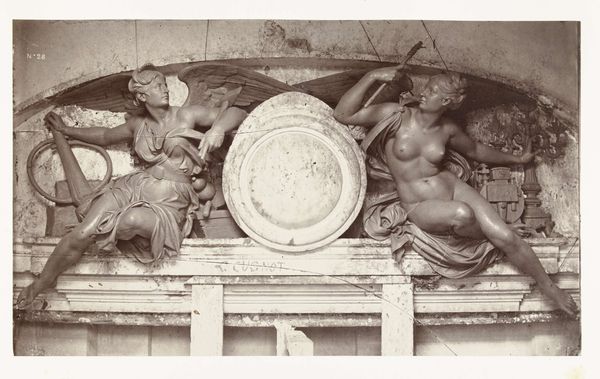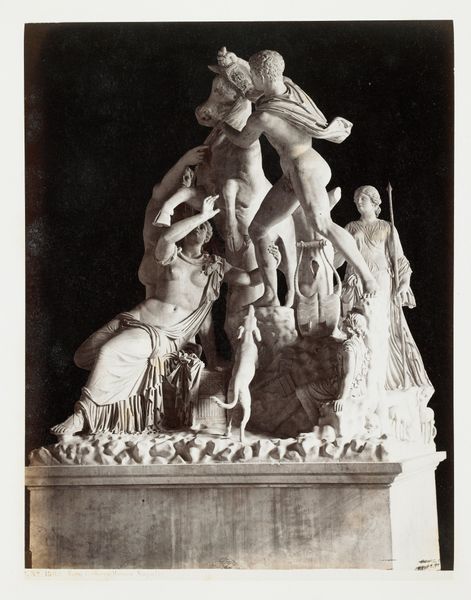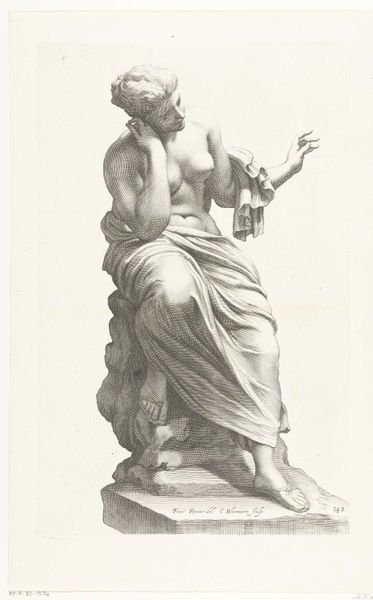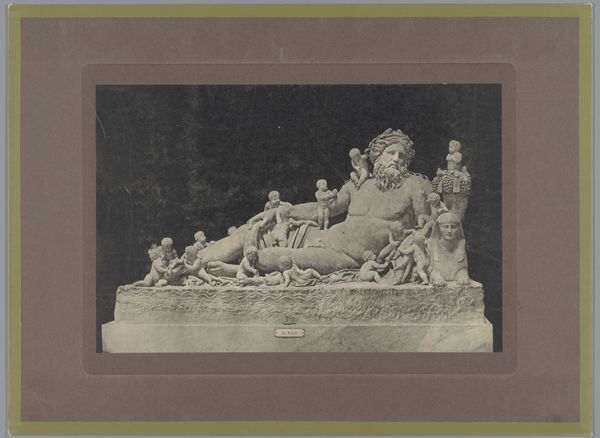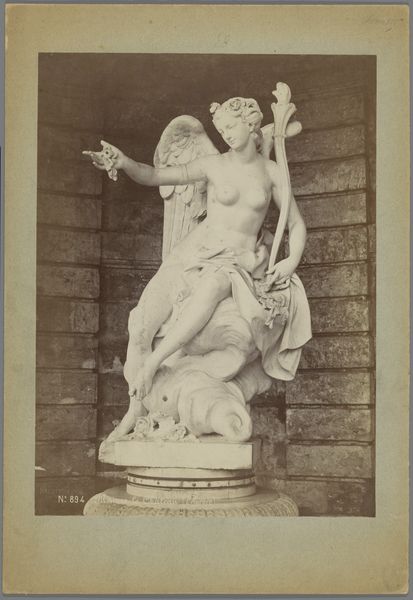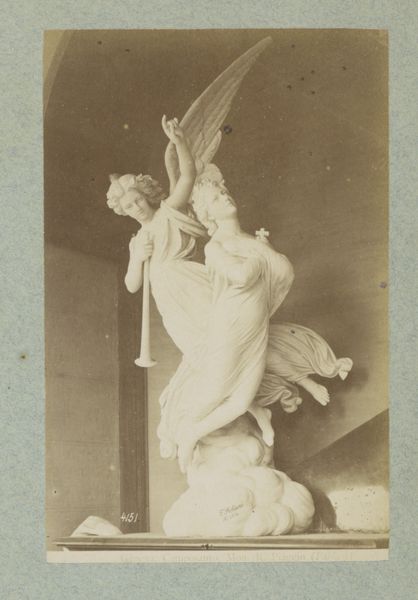
Beeldengroep aan de voet van het Albert Memorial in Londen: Amerika 1878 - 1890
0:00
0:00
public-art, sculpture, marble
#
statue
#
allegory
#
sculpture
#
classical-realism
#
public-art
#
historic architecture
#
sculpture
#
history-painting
#
marble
#
statue
Dimensions: height 110 mm, width 170 mm
Copyright: Rijks Museum: Open Domain
Editor: This is "Beeldengroep aan de voet van het Albert Memorial in Londen: Amerika", a marble sculpture group created by Francis Godolphin Osbourne Stuart between 1878 and 1890. I’m struck by how idealized these figures are; there’s a distinct visual language being employed. How do you interpret this work, especially within its historical context? Curator: The allegory of "America" in this sculpture reveals a great deal about Victorian attitudes towards colonialism and race. Notice how the figures are arranged, particularly the positioning of the indigenous figures in relation to the classically inspired figures, and even the buffalo. Who seems to be in control? Editor: The classically dressed figure certainly appears dominant. It seems to suggest a hierarchy with "civilized" Europe guiding "untamed" America. Curator: Exactly. Consider also the inclusion of the buffalo, representing the American wilderness. What statement does it make by placing it at the feet of the other figures? The sculpture presents a very specific, constructed narrative. Can we accept that today? Editor: I suppose it suggests the subjugation of both nature and indigenous populations in the name of progress and expansion, it doesn't sit well. Curator: And whose progress? Who is benefitting, and at whose expense? These are vital questions to consider when engaging with works like this. It’s a monument, yes, but it’s also a deeply political statement reflecting the values and biases of its time. What would you want viewers to consider? Editor: I think I would want them to understand the historical context and question the narratives that are being presented. Art isn’t neutral. Curator: Precisely. By examining these historical pieces critically, we can better understand how these biases continue to shape our present.
Comments
No comments
Be the first to comment and join the conversation on the ultimate creative platform.
